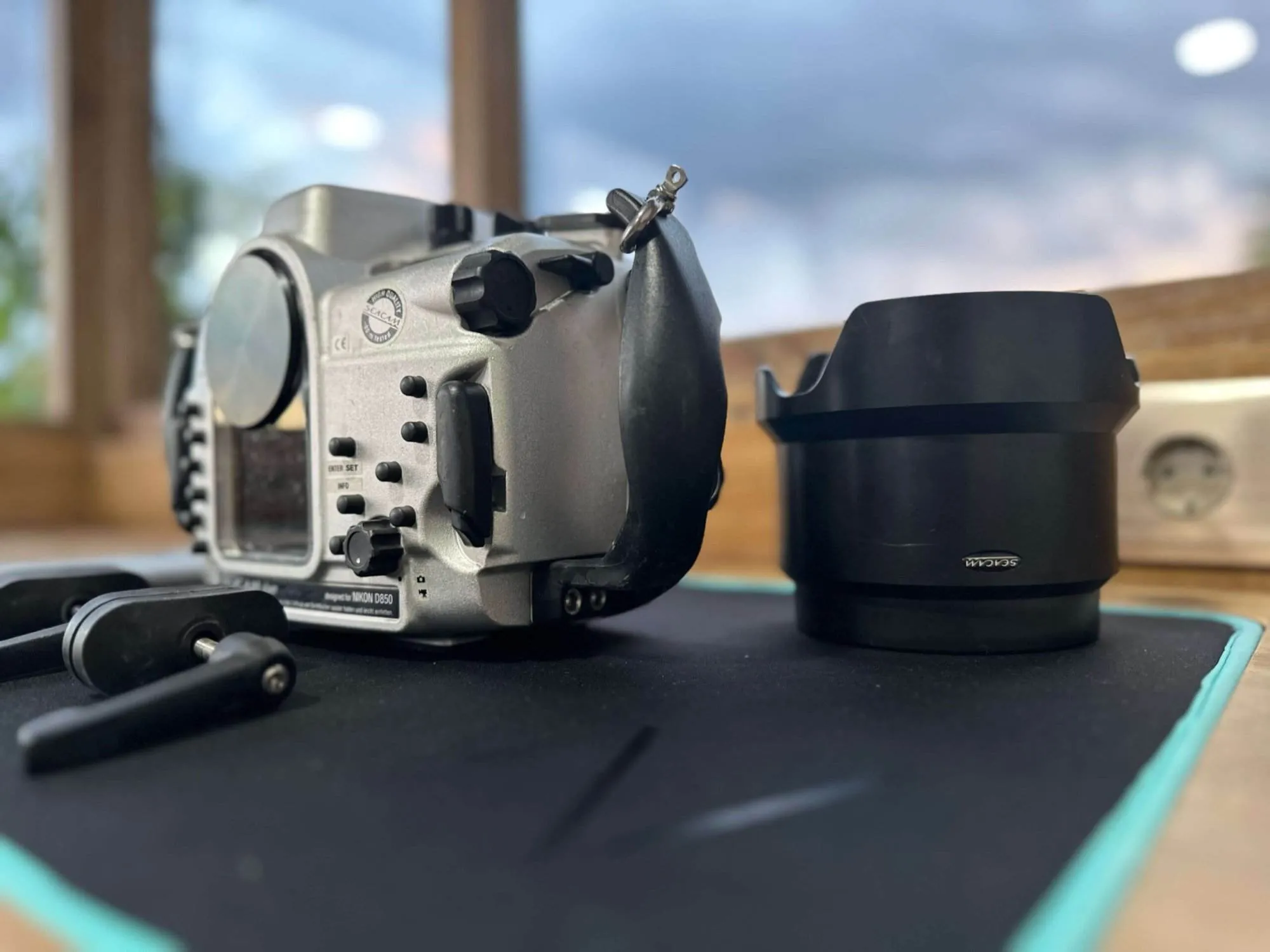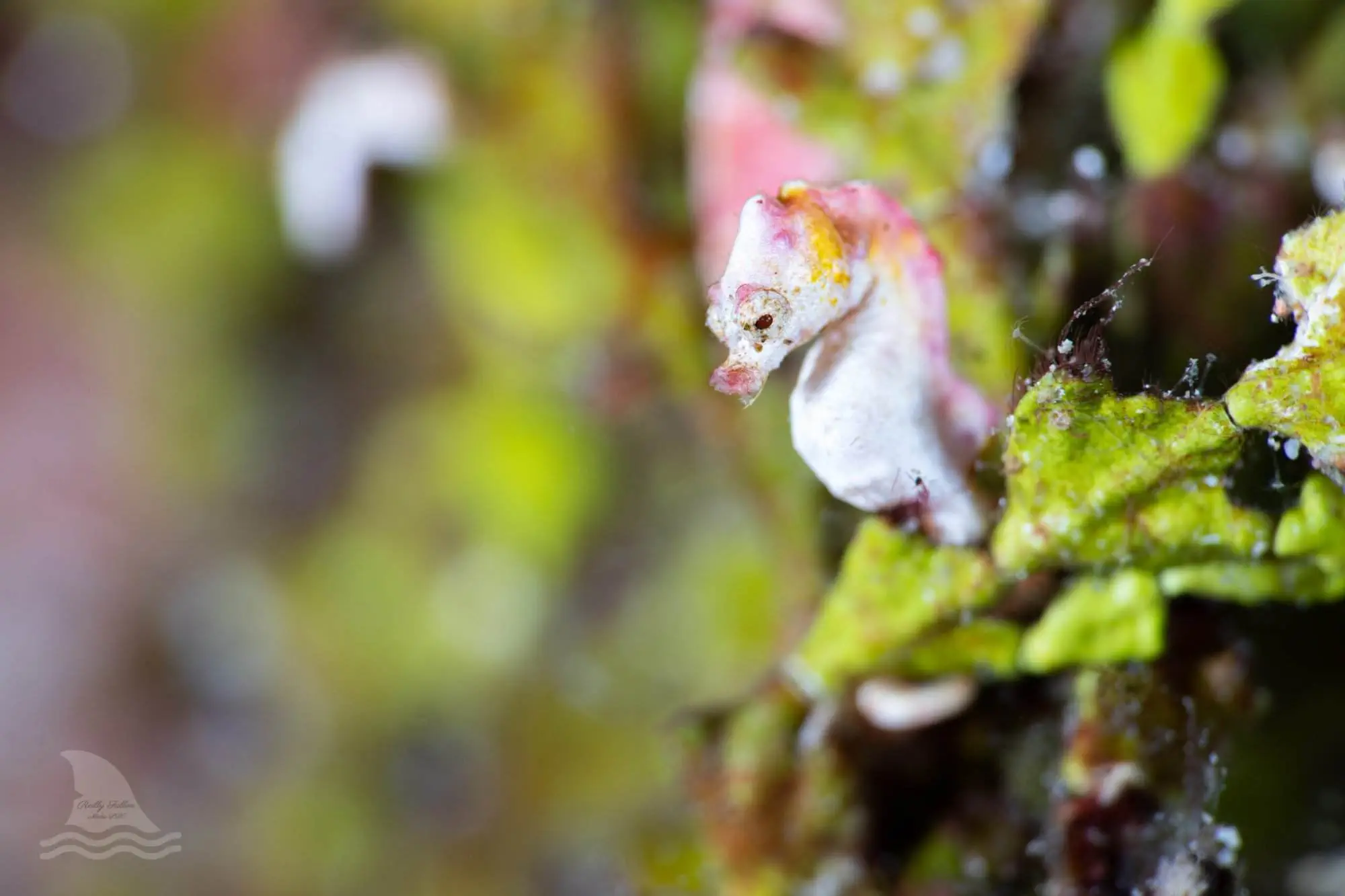If you are an underwater photographer and you are planning your next dive trip to Indonesia, you will be spoiled for choice! There are locations within Indonesia for shooting migrating whales, seasonal oceanic sunfish (mola), sharks, eagle rays, and hammerheads, but there are equally well known regions or those who want to capture some of Indonesia’s more cryptic critters. Indonesia’s sandy muck diving sites are often teeming with frogfish, nudibranch, and a host of rare and unusual cephalopods and crustaceans. So where will you chose to dive and what lenses are you planning to pack? (Italics)
Go Wide, Go Macro, or Go Home?
As underwater photographers, we tend to have a preference towards either shooting wide angle or macro, but that doesn’t mean that’s all we want to shoot right? So, what is the likelihood of ‘having it all’ in one trip? Most destinations claim to ‘have it all’ but realistically, like photographers, the region tends to lean one way more than the other. So, does it have to be a case of one week in one location for macro and then packing, domestic flights, transfers, and unpacking in another region to shoot wide angle? Or perhaps wide angle this year and macro the next?

Underwater Photography in Alor
There is a simple solution to the great wide angle or macro conundrum and it’s called Alor! Perhaps because of Alor’s unique location, in between the Banda Sea which is known for its hammerheads and pelagics, yet positioned in the Savu Sea which is a hotspot for critters and all things weird and bizarre, in Alor underwater photographers can really have their cake and eat it… or pack all of their lenses and use them! For photographers visiting our dive resort in Alor, the dive sites can be loosely grouped into three categories.
1) Wideangle Sites
These are our sites where we say you simply have to shoot wide angle. Put simply, do you want to capture a wide angle image of a great hammerhead or a macro shot of its eye because nothing else will fit or focus in your view finder?
2) Macro and Super Macro Sites
Similarly to our wide angle sites, these are our sites where we will quite happily let you know that shooting macro is a must, unless of course you want your frogfish picture to look like a page from Where’s Wally but renamed “Find the Frogfish”.
3) Combination Sites
This category accounts for the majority of our dive sites here in Alor. It’s entirely possible to be shooting a wide angle shot of a mola while there are frogfish posing directly behind you. Spoiled for choice? Yes, but we believe it’s a good ‘problem’ to have!!

Marine Life & Underwater Photography in Alor
When deciding whether to shoot wide angle or macro in Alor, we understand that a lot of your decisions may be based on what you can expect to see at any given dive site. If you are a frogfish enthusiast then you may want to shoot macro at a site renowned for multiple frogfish species, despite it also being a site where we have potential thresher shark sightings. Likewise, if you love great reef scenes, you may want to shoot wideangle even though the site offers fantastic critter sightings.
Our team are extremely knowledgeable about the marine species we see at different sites and they are experienced in guiding and understanding the needs of underwater photographers. If you are not sure what lenses to prepare, ask us about the sites you will visit in advance and let us know if there is anything specific that you are hoping to see. While we can’t control nature or our ocean inhabitants, we can give you our best advice and recommendations based on our years of diving here!

Wideangle Underwater Photography Subjects in Alor
If wide angle images and wide angle photography is your preference, here are (what we think) are 10 incredible wide angle opportunities that Alor offers:
- Stunning Reef Scenes: Think color, and then think even more colour! Our corals are diverse and densely packed even in the shallows so capturing vibrant colours even with only natural light is entirely possible.
- The Big Blue: Always keep an eye out to the blue in Alor. You never know what you might see but it is often big. Whether it is a large school of fish or one of our passing pelagics, a macro lens won’t do you any favors!
- Unique Reef Features: Even our house reef is home to a cave! As well as caves you’ll find pinnacles, ledges, and recesses that translate beautifully on camera, natural light flood shallows, and look out for some of the incredible side profiles of the walls.
- Mola Mola: Usually spotted between August and November, these are definitely a worthy wide-angle subject. Once the mola has traveled from the depths to our shallows for rewarming on the surface, or for occasional cleaning, it will begin to relax into a trance-like state and, providing you keep your distance and photograph unobtrusively, it’s possible to capture incredible images.
- Thresher Sharks: Shutter speed is everything if you are hoping to capture a crisp wideangle shot of these fast-moving sharks.
- Hammerheads: Alor offers both schooling scalloped hammerheads and sightings of individual great hammerheads. Capturing the eyes and the profile of the head is key to a great hammerhead shot.
- Cetaceans: We are extremely fortunate to have sightings of whales (pilot whales, pygmy blue whales, melon-headed whales and sperm whales) in our waters and we offer dedicated dolphin and whale watching tours with the aim of being able to passively enter the water and snorkel with certain species of these incredible creatures.
Please note that we only enter the water with species that do not become spooked by snorkelers and would therefor change their route due to our presence. Our dolphin and whale watching tours are ethically managed and we follow all Marine Park and Government regulations regarding encounters.
If you should see a whale while diving, we ask that you put the wellbeing and rite of passage of the animal before any photography opportunity. The whales are migrating and it is extremely important that their normal behaviour and migratory route is not interrupted in any way. For the best chances of a whale sighting, we highly recommend joining one of our whale watching tours.
- Sea Turtles: Everybody loves sea turtles! We mostly encounter hawksbill and green sea turtles on our reefs. While the smaller hawksbill turtle can be more skittish, a close up encounter with a green sea turtle is incredibly special.
- Eagle Rays: Another fast-moving Alor resident. When shooting eagle rays use a fast shutter speed and for the best images, attempt to capture the entire tail length in the frame.
- Marble Rays: Known as the ‘Gatekeeper’ we have a huge resident marble ray on our House Reef! There are chances to spot these huge rays at several of our favourite dive sites.

Macro Underwater Photography Subjects in Alor
If your shooting preference is on the smaller side, the macro and super macro underwater photography opportunities in Alor certainly do not disappoint! Once again, here are 10 of our favourite cryptic critter species for capturing on camera:
- Frogfish: Alor is home to multiple species of frogfish, all of which make for stunning underwater images. If taking a side profile shot, aim to get the eye in focus and a lightly blurred background will make the subject stand out even more.
- Nudibranch: So many species! There are nudibranch in Alor all year round although some species appear to be seasonal. Look out for nudibranch with egg ribbons or in positions with contrasting backgrounds.
- Blue Ring Octopus: There’s no doubt that blue rings are most eye catching while flashing their rings, however, avoid attempting to agitate the critter to encourage flashing. Most likely your camera lens approaching will be enough for it to put on a display!
- Harlequin Shrimp: If you spot one, look out for its partner – these shrimps travel and hunt in pairs. Great behavioral shots of Harlequin shrimp usually feature the shrimp hunting (usually sea stars) or even carrying an amputated limb back to their burrow to feed on later.
- Rhinopias: We find Eschmeyeri and Frondosa Rhinopias on a regular basis.
- Pygmy Seahorses: We have two species here in Alor, plus one endemic colour variety (see above). Avoid repetitive shooting – doing so will result in the seahorse turning inward to the fan (away from your camera) and they rarely turn back.
- Ghost Pipefish: From Robust and Halimeda to Velvet and Ornate, we have multiple species of ghost pipefish in Alor. When shooting macro having at least one eye and the snout in focus is crucial.
- Pegasus Sea Moths: This is a surprisingly tricky critter to shoot. Sea moths are usually spotted over sandy substrate which they blend in perfectly with. Shoot from low down to eliminate as much sand as possible and capture a contrasting background. If shot from above the image will appear flat and the moth will be hard to distinguish.
- Mimic Octopus: If you like behavioural shots, look no further than the mimic octopus! Mimicking images are wonderful but an image of this critter ‘sitting’ upright on the sand works fantastically well too.
- Bobtail Squid: If you are night diving with us then the Bobtail Squid is a wonderful photography subject. Capturing the squid’s bioluminescence almost guarantees a stunning image.

Underwater Photography Facilities at SAVU South Alor
At SAVU South Alor we offer the following facilities and services for underwater photographers and videographers:
Dedicated Camera Room: To ensure that you have the best possible underwater photography or videography experience with us here in Alor, we have a dedicated camera room. The camera room was designed with the needs of photographers in mind and offers individual workstations. Each workstation is complete with neoprene mats for cushioning your gear, bright desk lamps so you inspect your gear and O-rings with ease, and plenty of electricity sockets for charging batteries, lights and other accessories.
Dive Boats: Our boats carry additional water for rinsing camera gear and for storing equipment to keep it cool in between dives. We also have shaded areas and storage areas on board the boats for stowing away additional gear.
Experienced Guides and Crew: Our experienced team have years of experience in guiding and understanding the unique needs of underwater photographers and videographers. Our boat crews are similarly experienced, and you can rest assured that your camera rig is in safe hands.
Our boat captains and crew will hand you your rig once you are in the water and take it from you when you surface at the end of your dive. Our crew will not interfere with your setup, only handle it with care – as if it were their own!
A Passion for Imaging: Our entire team is just as passionate about marine life and imaging as you are!

Book Your Alor Dives or Snorkeling with Us
Are you ready to book your next snorkeling or diving holiday with us? Stay with us Savu South Alor and enjoy our dedicated facilities and services for underwater photographers and videographers. Indulge yourself with our barefoot luxury approach, personal service, and phenomenal dive sites.
We offer sustainable accommodation and farm to table dining combined with years of experience in exploring and diving the Alor Archipelago. Our commitment to conservation and marine protection is borne out of our passion for the ocean – something we love to share with our guests!
If you would like to make an Indonesian underwater imaging trip with a difference, contact us at: info@savusouthalor.com or fill in our contact form. We look forward to welcoming you to SAVU South Alor soon.


